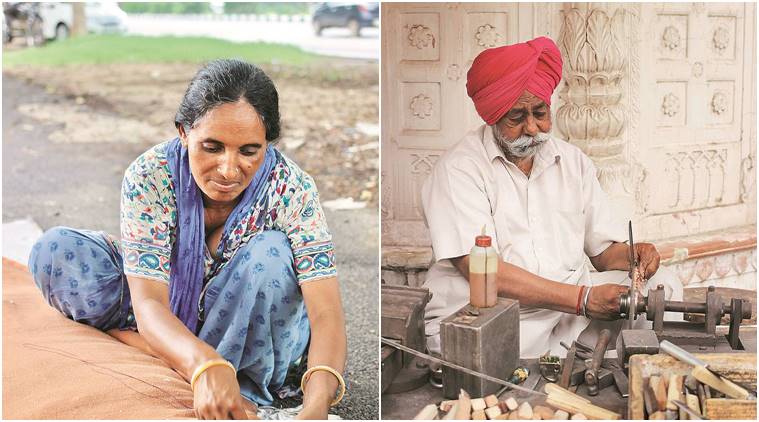Kirrt project: Postcards from the Past
Kirrt is a project that documents craftspeople, artisans and artists of Punjab in an effort to showcase and promote their work

Artisans participating in Kirrt
IT’S a labour of love, beyond boundaries, but connected by the love for creativity. It’s a collective that is driven by a passion for the past, with an eye on the future. Kirrt is a unique project that has its roots in Punjab, with a vision and hope to reach out to people across the country — collecting stories and documenting the creations of people who work with their hands, and also contemporary artists. The heart and soul of the project are Gurdeep Dhaliwal, artist, photographer and writer, and Navjeet Kaur, painter and costume designer — who are supported by like-minded people. Kirrt is a Punjabi word with its roots in the Sanskrit word Krit, or Kriti, which means manufacturing, making and creation.
In Punjabi, kirrt has the same meaning, but with an additional connotation of kirrt as labour, explains Dhaliwal. In Gurbani, hathin kirrt karna, to work with your own hands is considered honourable and essential for spiritual well-being. Further, kirrt karna and wandd shakna, to work and share the produce/yield with others, is one of the core principles of not only the Sikh faith, but the multi-religious Punjabi community.
The core of the project is human and not related to any religion or community, with an open and democratic space, as the project strives to tell and document stories of the kirrtas and their crafts and art forms, many of which are getting lost with time and dying. The larger idea of the documentation is to help these people evolve with the changing times, adapt to new demands and create platforms for their growth and financial stability. The stories of their work and lives are documented in text, videos, photographs to reach out to wider audiences. From market places in small towns and cities, villages, rural areas, Dhaliwal, Navjeet, and others, involved travel to document the work of palki makers, people who make fishing nets in Tarn Taran Sahib, makers of musical instruments in Amritsar, quilt-makers, people repairing rababs, potters, an artisan who makes knives in Qila Mubarak in Patiala, a shoemaker in Anandpur Sahib, a person who makes ropes with old clothes, brass utensil makers, a woman in a village who makes soft toys and horses using discarded clothes, mehndi designers, an artist who has created calligraphy books for children, and even the Punjabis living in South Africa who create works from shells and wood.
Satdeep Gill from Patiala participates in covering stories, while Jasdeep Singh, who is part of the project, says that in the modern era of mechanised manufacturing, the project is a way to honour the craftsmen, crafts, artists and artworks. Dhaliwal, who works in Chandigarh, asks that while everyone protests about the degrading art, music and films being produced, who is ready to invest in something valuable? “How can the art, we wish to see, come to life when there’s no money to make it. The simple reason being, producers see no point in investing in such a product which won’t fetch any profits. So, this effort here is a practical one, to create a platform where we can raise money to invest in the arts. During my years in the UK and travels in Europe, I visited numerous galleries and museums, and felt how important they were to sustain art in the region and to inspire art, something we lack here. Apart from a website and virtual gallery, we have started creating products about the project, starting with postcards on artisans and craftspeople working in different areas and now strive to create real galleries,” explains Dhaliwal.
Navjeet, who has done costumes for films like Chauthi Koot, Qissa Punjab and Soni, says she gained her artistic sensibility from people around her, those who practiced multiple skills, art forms and crafts.
“It’s so fascinating for me to see artists and artisans accept, adapt and bring change in their crafts with new technology. I want all types of arts and crafts to flourish in this changing time by bringing the creators in focus. We want the project to travel places, and so hope to create books on it. Apart from postcards, we have created utility items like T-Shirts, maps of undivided Punjab, and are reaching out to people to be involved in the project, with a Japanese teacher in Pakistan also keen to pitch in with stories of people who create magic with their hands,” says Navjeet, who hopes that more people will be members of Kirrt’s future plans.






















 Artistans participating in Kirrt
Artistans participating in Kirrt Gurdeep Dhaliwal and Navjeet Kaur
Gurdeep Dhaliwal and Navjeet Kaur
No hay comentarios:
Publicar un comentario